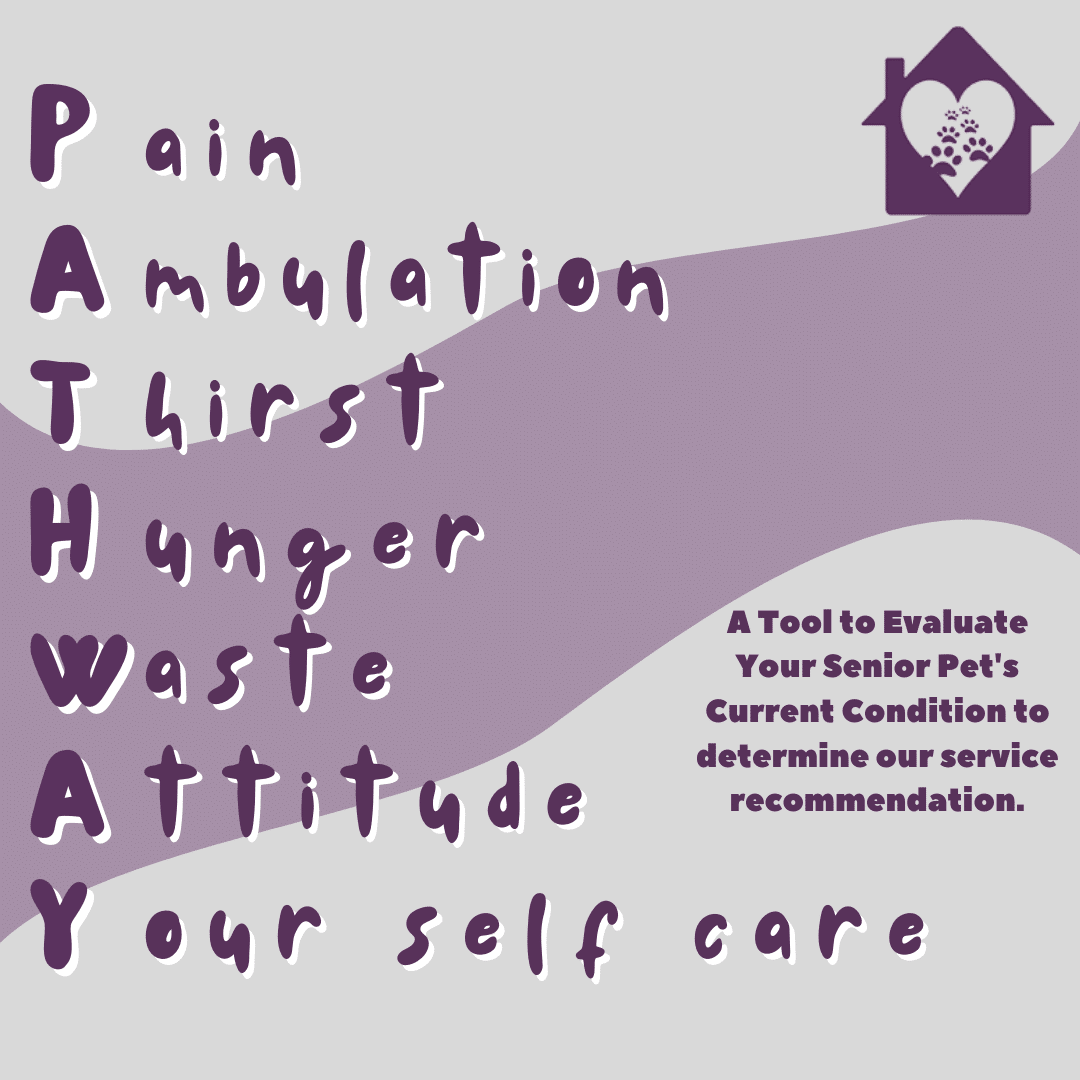Pathway to Care Assessment
Our Pathway to Care Assessment is a thoughtful questionnaire developed by our veterinary hospice and palliative care team to help you evaluate your pet’s quality of life. By answering a series of questions about your pet’s daily comfort, behavior, and medical condition, you’ll receive a personalized care recommendation based on a scoring system created by our professionals.
This tool is designed to support you, not to pressure you. Whether you’re unsure about timing, feeling overwhelmed, or simply need help making sense of what your pet is going through, the assessment can help you gain clarity. At the end, you’ll receive a care recommendation (such as hospice support, a TeleAdvice appointment, or in-home euthanasia), along with options to connect with our team for next steps.
Before You Begin: Crisis or Emergency Situations
While some pain, immobility, or discomfort can be typical of an older pet or one suffering from a chronic condition, some situations are clear signs of an emergency and should be addressed immediately by a veterinarian.
If your pet exhibits any one or more of these symptoms below, do NOT complete the form. This is an emergency situation and your pet needs urgent care immediately. Although we support your desire to keep your pet at home, when their end-of-life circumstances become a crisis, sometimes getting your pet relief and help with their last moments of their earthly journey sooner is a more favorable and merciful choice. Timing can become precious and critical. Making the decision to seek more immediate help at a nearby facility can give your pet the peace and comfort they need in their time of emergency.
- Choking, difficulty breathing, nonstop coughing
- Severe bleeding or bleeding that doesn’t stop within 5 minutes
- Bleeding from the nose, mouth, rectum, coughing up blood or blood in the urine
- Inability to urinate or pass stool or obvious pain associated with urinating or passing stool
- Staggering or more than two seizures in 24 hours or duration longer than 5 minutes
- Fractured bones, severe lameness or inability to move legs
- Heat stress or heatstroke
- Severe vomiting or diarrhea (more than two episodes in a 24 hour period) or either of these combined with obvious illness or other problems listed here
- Unconsciousness
Caring Pathways’ Pathway to Care Assessment
Our “pathway to care” assessment allows you to evaluate your pet’s condition objectively and monitor it over time. If there are two or more caretakers for the pet, each of you should fill it out independently because each of you might see things differently. Keep in mind that many pets will hide their symptoms and eat and do things to please you, even when they are not feeling well.
Check the box beside each statement that is true for your pet right now. When you are finished with the entire form, click submit. You will then be redirected to a recommended services page based off the boxes you checked on the form.
Caring Pathways’ Pathway to Care Assessment
Our “pathway to care” assessment allows you to evaluate your pet’s condition objectively and monitor it over time. If there are two or more caretakers for the pet, each of you should fill it out independently because each of you might see things differently. Keep in mind that many pets will hide their symptoms and eat and do things to please you, even when they are not feeling well.
Check the box beside each statement that is true for your pet right now. When you are finished with the entire form, click submit. You will then be redirected to a recommended services page based off the boxes you checked on the form.

Take Our Pathway to Care Assessment
This assessment was designed by a team of veterinarians with a great deal of experience caring for pets and the people who care for those pets. If the pet is totally happy and healthy, there should be no boxes checked. As the quality of life of the pet and family declines, there will be more items checked.
Measuring Your Pet’s Quality of Life
Determining quality of life is a difficult thing to measure, particularly for a beloved pet. Please note that our Pathway to Care Assessment is not a verified scale to determine your pet’s quality of life, but rather a tool to guide you to our recommended services and resources to best serve you and your elderly or sick pet.
Our team recommends Dr. Alice Villalobos’ HHHHHMM Quality of Life Scale. A total of over 35 points indicates an acceptable quality, however palliative and hospice care may help improve quality of life or keep it at a higher level.

